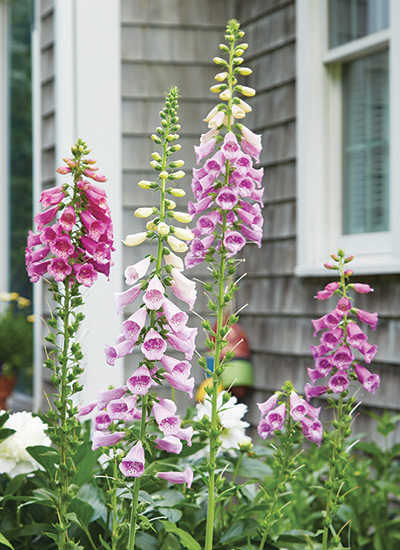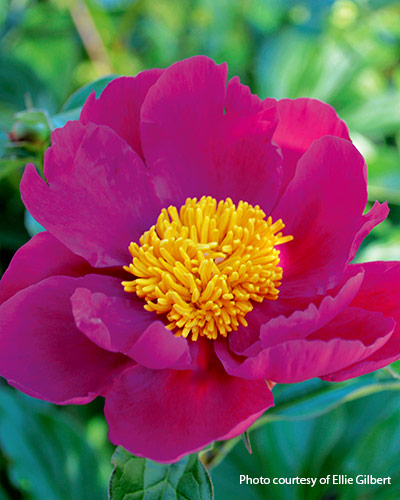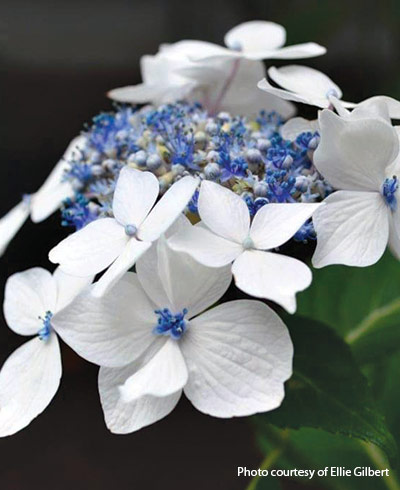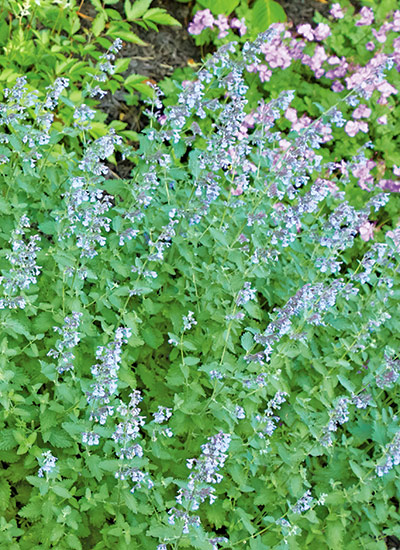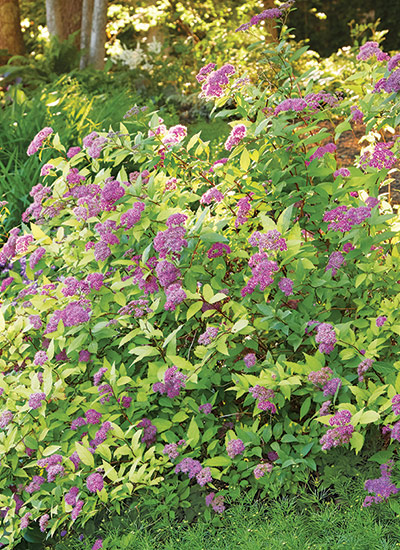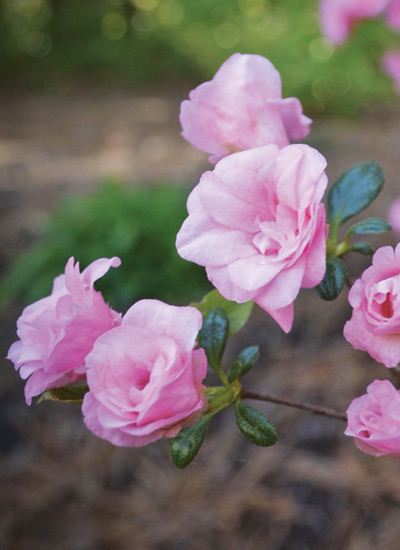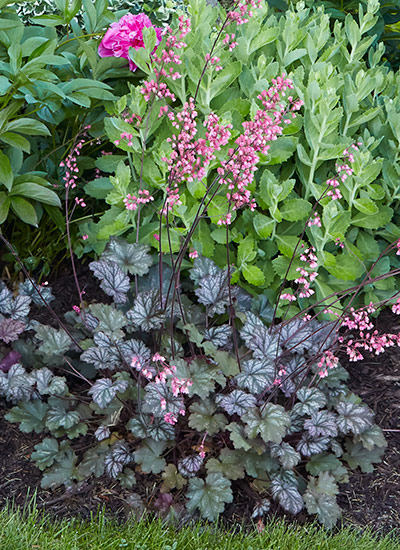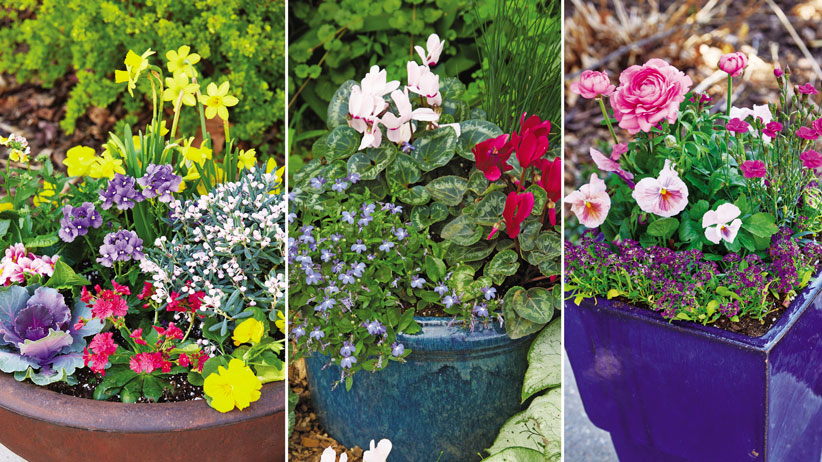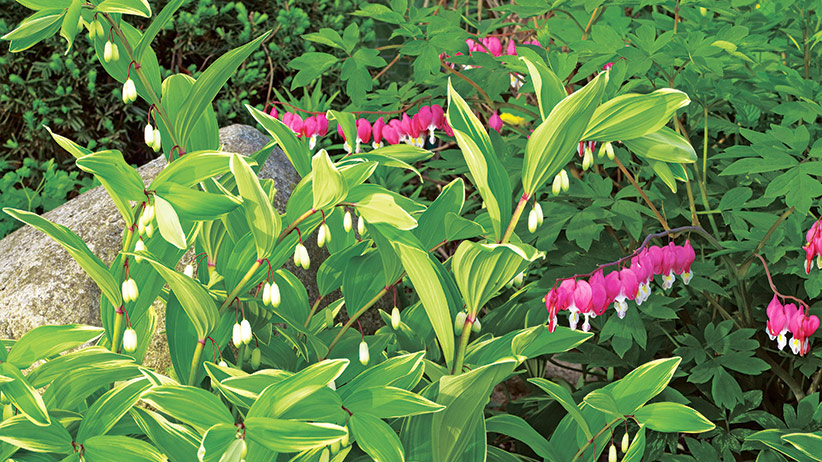Hillside beauty
There are no quick fixes in gardening. Ellie Gilbert’s patient development of this 20-year-old Massachusetts garden is a testament to what investment in soil, careful observation and a lot of hard work can do. That’s why we chose her as the winner of the 2021 Garden Gate Reader Garden Award. Ellie designed gentle curving borders with a unified plant palette in this zone 6 garden and not only tamed a challenging slope but turned it into a canvas splashed with color and texture in every season. Let’s take a look!

Starting from scratch
When Ellie and her husband, Ed, moved into their newly built home in 2001, the landscape was a completely blank slate. But they knew it wouldn’t always be so sparse. That’s why the first thing they did was build a compost pile, knowing it would pay dividends in the long run.
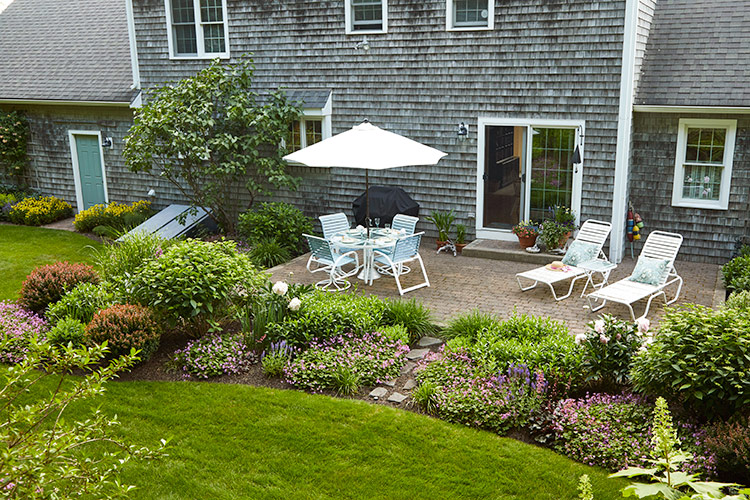
Patio project
The 14×24-foot patio above was the next project on the to-do list, and Ed laid every paver himself. Then Ellie got to work planning and planting the borders around the patio and the house’s foundation.
She filled them with perennials and shrubs in her favorite color scheme of pink, purple and pale yellow. Several types of hydrangeas, burgundy barberries (Berberis thunbergii) and a Koreanspice viburnum (Viburnum carlesii) planted specifically for its fragrance form the backbone of the curving 7- to 12-foot-deep bed around the patio. Perennial geraniums (Geranium x cantabrigiense), garden phlox (Phlox paniculata), salvia (Salvia x sylvestris), lady’s mantle (Alchemilla mollis) and coral bells (Heuchera hybrids) fill out the beds. She allows forget-me-nots (Mylsotis sylvatica) and foxgloves (Digitalis purpurea) below left to reseed.
You Might Also Like:
Patio Garden Plan
Create a Beautiful Rose Garden
Best Perennials for New Gardeners
Lily Garden Tour

The long-term plan
After a few years, Ellie started dividing the perennials that thrived to expand the planting and added them to other beds in the garden. This approach has resulted in a lovely repetition and cohesive color palette throughout the entire yard.
Every spring she has 5 or 6 yards of dark brown bark mulch delivered, and she tops all the beds with a fresh layer of mulch (except the spots where she wants foxgloves, columbines (Aquilegia spp. and hybrids) and forget-me-nots to reseed). In the last couple of years she’s enlisted her grandson’s help to do the hauling with the wheelbarrow so she can focus on spreading the mulch and making a pass with a hand edger to crisp up every bed’s edges. After that, the secret to keeping these beds so beautiful is never letting yourself get overwhelmed. Ellie says, “I make a habit of doing a daily walkabout, when I can notice where grass might be creeping into the bed edges, see weeds that need to be pulled or catch a fungus starting.”
The final touch in the beds around the patio and the house’s foundation are the three trellises Ed built to hang on their cedar shake siding. Ellie planted the ‘Serotina’ honeysuckle (Lonicera periclymenum) above right on the garage wall and enjoys the hummingbirds that start to visit every year around Mother’s Day.
Transforming the hillside into a garden
The crown jewel of the Gilberts’ landscape is an 18-foot-deep, 120-foot-long slope garden that rises to a lovely woodland walkway at the back of their property. It’s proven to be both challenging and rewarding. You can watch Ellie's own slideshow of the transformation above.

Start with the soil
Gardening on a slope is difficult enough, but the soil on this hillside was so sandy that water ran right through it. (The Gilberts live 5 minutes from the shore.)
“There were only 2 inches of soil that the builders had spread on the hill. When you dug down it was pure beach sand,” Ellie remembers.
Every time she planted something new in the hillside garden, she dug a large hole and mixed in plenty of compost. The yearly layer of mulch has helped to build the soil into a much thicker layer, as well.
Add structure
When she was ready to take on this garden, Ellie dug European white birch (Betula pendula) saplings from nearby undeveloped lots that would be bulldozed soon. She planted seven of them along the crest of the hill. The repetition really anchors the design, and their open structure makes it easy to garden (and navigate paths) beneath them.
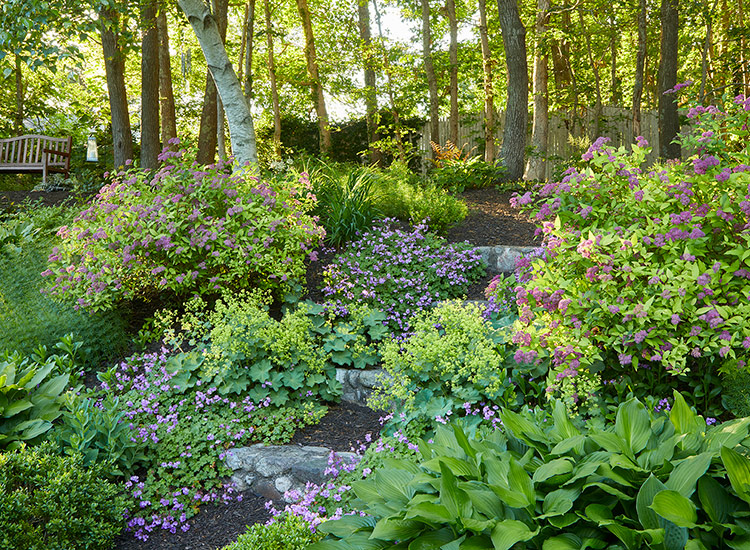
Planting the hillside
Not wanting to scramble up the hillside every time she needed compost or wished to wander the woodland path in the garden, Ellie turned to her handyman Ed for the stone steps in the photo above. Then she planted a few young perennials and shrubs at the edges, hoping they would eventually help the stairs blend into the hillside.
She also started with a few creeping junipers (Juniperus horizontalis) and moss phlox (Phlox subulata) on the slope to hold the soil in place and added more plants every year for structure and contrast.
Large sweeps of plants and repetition help create a rhythm and harmony. Pink and purple moss phlox and perennial geraniums bring color in spring; by summer, Shasta daisies (Leucanthemum x superbum), daylilies (Hemerocallis hybrids) and threadleaf coreopsis (Coreopsis verticillata) take over, and in fall colorful hydrangea heads, tall sedum (Hylotelephium spectabile) flowers, swaying grasses and golden river birch foliage show off.
You Might Also Like:
Spring Woodland Walk Plan
Tips for Adding Structure to Your Garden
Backyard Retreat book
Design with Repetition
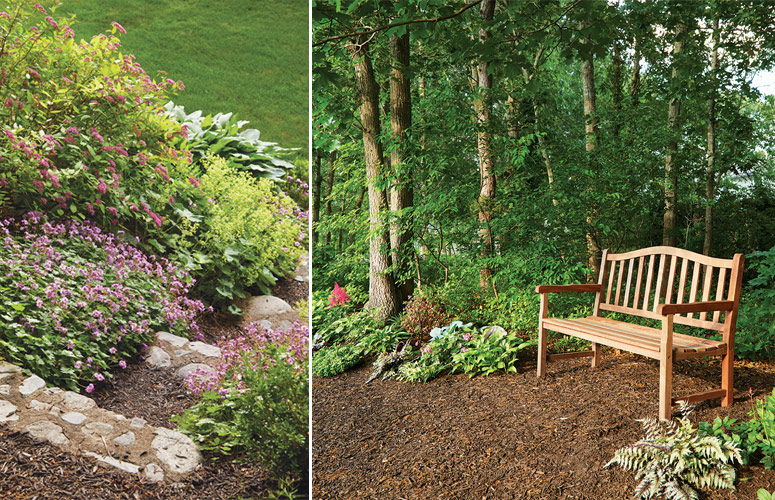
Woodland walk
At the crest of the hill, a 4-foot-wide mulch path meanders beneath the birch trees through plantings of azaleas, hostas, astilbe and ferns. As you walk it, you’ll be tempted to sit on the bench above and enjoy the cardinals, chickadees, tufted titmice and other birds that visit the nearby feeders. It’s a quiet spot and also a good place to view the borders below from another vantage point. Ellie, an accomplished photographer, enjoys finding unique ways of looking at the garden. The view from the top of the hill, peeking through a birch’s branches is one of her favorites.
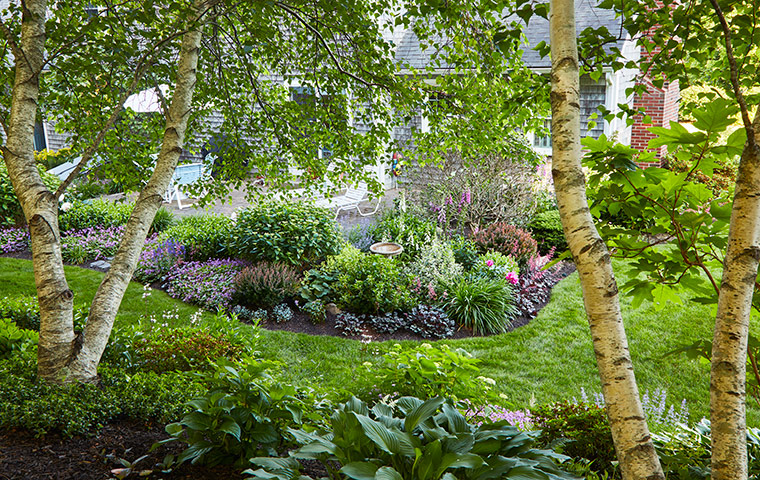
The plant palette
You might have gathered from its look that Ellie has a very disciplined approach to her garden. She keeps a to-do list for the future and notes when the best time to do each task would be. Keeping perennial divisions watered in July can be tedious work, but tackling that project in April means that the new plants take off quickly and don’t require extra babying.
Ellie also keeps a folder with all of her plant tags (those that have thrived as well as those that have failed!). This way she knows what to buy if a single plant in a clump dies out and needs replacing. “I’m a fanatic about keeping my plant tags. If I lose one of the plants in a pattern, I want to replace it with the same thing.” All that record keeping and 20 years of trial and error have led to a few favorites. Ellie has shared 9 of hers in the gallery below.



